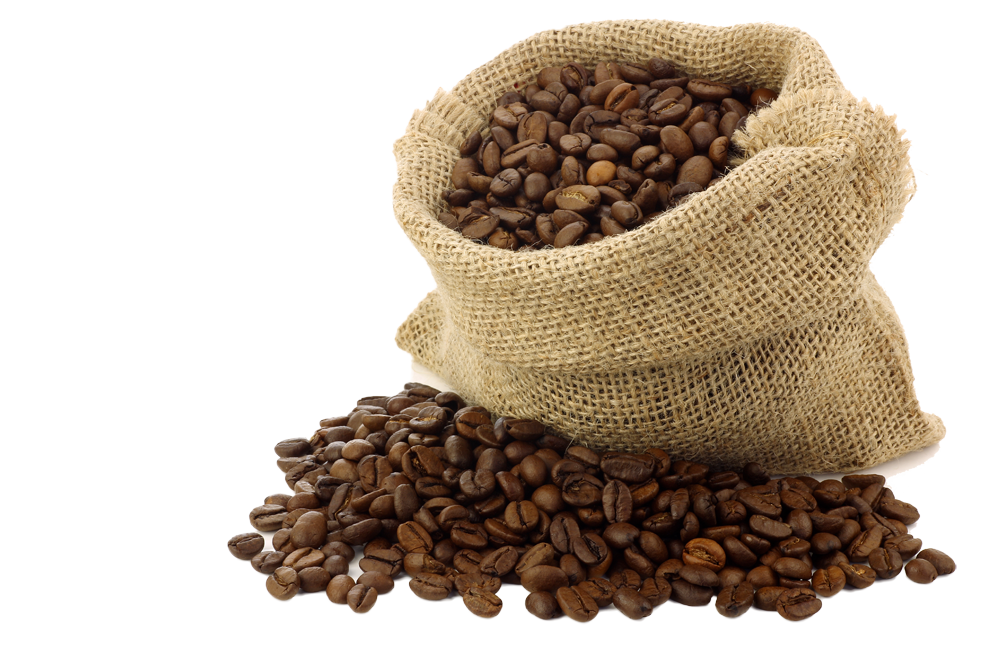
This image has format transparent PNG with resolution 1000x667.
You can download this image in best resolution from this page and use it for design and web design.
Coffee beans PNG image with transparent background you can download for free, just click on download button.
A coffee bean is a seed of the Coffea plant and the source for coffee. It is the pit inside the red or purple fruit often referred to as a cherry. Just like ordinary cherries, the coffee fruit is also a so-called stone fruit. Even though the coffee beans are not technically beans, they are referred to as such because of their resemblance to true beans. The fruits; coffee cherries or coffee berries, most commonly contain two stones with their flat sides together. A small percentage of cherries contain a single seed, instead of the usual two. This is called a "peaberry". The peaberry occurs only between 10% and 15% of the time, and it is a fairly common (yet scientifically unproven) belief that they have more flavour than normal coffee beans. Like Brazil nuts (a seed) and white rice, coffee beans consist mostly of endosperm.
The two most economically important varieties of coffee plant are the Arabica and the Robusta; ~60% of the coffee produced worldwide is Arabica and ~40% is Robusta. Arabica beans consist of 0.8–1.4% caffeine and Robusta beans consist of 1.7–4% caffeine. As coffee is one of the world's most widely consumed beverages, coffee beans are a major cash crop and an important export product, accounting for over 50% of some developing nations' foreign exchange earnings.
According to legend, the coffee plant was discovered in Ethiopia by a goat herder named Kaldi, who observed increased physical activity in his goats after they consumed coffee beans.
The first coffee plant was found in the mountains of Yemen. Then by 1500, it was exported to the rest of the world through the port of Mocha, Yemen.
First cultivation in India (Chikmagalur) – 1600
First cultivation in Europe (also first cultivation outside of east Africa/Arabia) – 1616
First cultivation in Java – 1699
First cultivation in Caribbean (Cuba, Hispaniola (Haiti and the Dominican Republic), Jamaica, Puerto Rico) – 1715–1730
First cultivation in South America – 1730
First cultivation in Dutch East Indies – 1720
The plants were first introduced in the Americas around 1723.
Roasted beans first sold on retail market (Pittsburgh) – 1865
Important spray-drying techniques developed in 1950s, which along with freeze drying are method to create instant coffee
Brazil produces about 45% of the world's total coffee exports, with most grown in Brazil. The United States imports more coffee than any other nation. As of 2015, Americans consumed approximately 400 million cups of coffee per day, making the United States the leading consumer of coffee in the world.
Coffee plants grow within a defined area between the Tropics of Cancer and Capricorn, termed the bean belt or coffee belt.
When the fruit is ripe, it is almost always handpicked, using either "selective picking", where only the ripe fruit is removed, or "strip-picking", where all of the fruit is removed from a limb all at once. This selective picking gives the growers reason to give their coffee a certain specification called "operation cherry red" (OCR). In rare circumstances, the Asian palm civet eats coffee berries and excretes the beans. These beans are called kopi luwak, and can be processed further into a rare and expensive coffee.
Two methods are primarily used to process coffee berries. The first, "wet" or "washed" process, has historically usually been carried out in Central America and areas of Africa. The flesh of the cherries is separated from the seeds and then the seeds are fermented – soaked in water for about two days. This softens the mucilage, which is a sticky pulp residue that is still attached to the seeds. Then this mucilage is washed off with water.
The "dry processing" method, cheaper and simpler, was historically used for lower-quality beans in Brazil and much of Africa, but now brings a premium when done well. Twigs and other foreign objects are separated from the berries and the fruit is then spread out in the sun on concrete, bricks or raised beds for 2–3 weeks, turned regularly for even drying.
In this gallery you can download free PNG images: Coffee beans PNG images free download